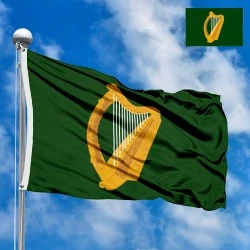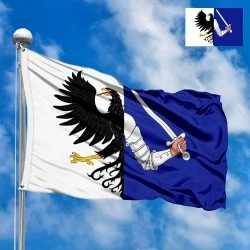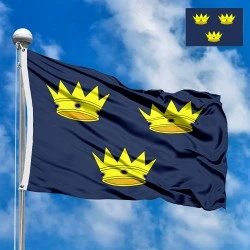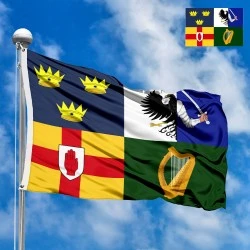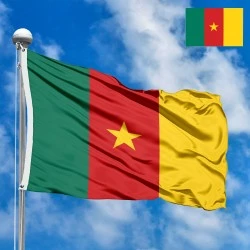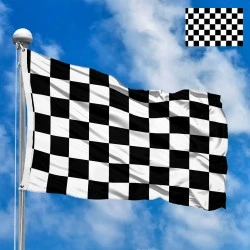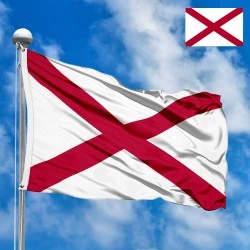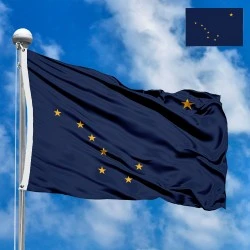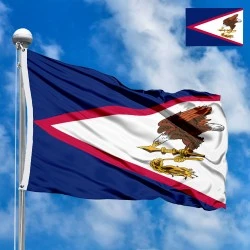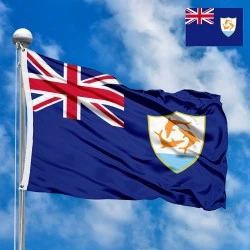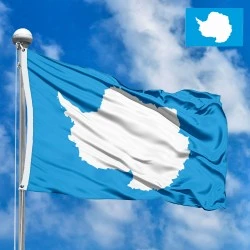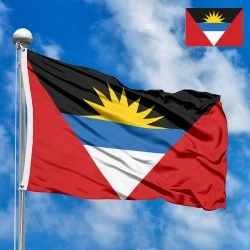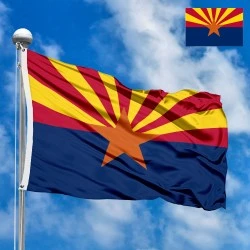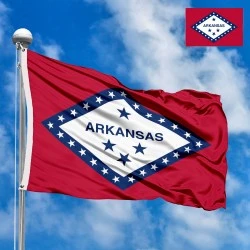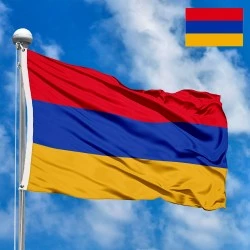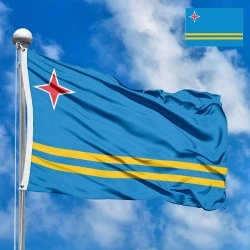Flag of Ulster
- Flag Type: Regional
- Proportions (official): 1:2
- Official name: Province of Ulster
- Local name: Ulster, Ulaidh
- Sovereignty (year): NO (Historical province of Ireland, divided)
- Large cities: Belfast, Derry, Newry, Armagh
- Languages: English, Irish, Ulster Scots
Flag Information
General information
Economy and communications
- All Flags
- Flags of Countries by Continent
-
Flags of Organizations
- Flags of UN countries
- Flags of the European Union countries
- Flags of NATO countries
- Flags of the countries of the Organization of Islamic Cooperation
- Flags of the countries of the Organization of American States
- Flags of the Arab League countries
- Flags of the African Union countries
- Flags of the countries of the Union of South American Nations
- Flags of the Commonwealth of Nations
- Flags of the countries of the Secretariat of the Pacific Community
- Flags of the Nordic Council countries
- Flags of the Caribbean Community
- Flags of the countries of the Association of Southeast Asian Nations
- Flags of the East African Community
- Flags of the countries of the Organization of Turkic States
- LGBT Community Flags
- Historical Flags
- Ethnic Flags
- Flags of the USA (states)
Description
The provincial flag of Ulster, one of the four traditional provinces of Ireland, is a profoundly significant and often debated heraldic emblem, rich in centuries of history, conflict, and distinct cultural identity. Unlike the national flag of the Republic of Ireland, which represents the modern sovereign state, or the current flag of Northern Ireland (which is the Union Flag), the Ulster flag specifically symbolizes the historical province of Ulster, encompassing both the six counties of Northern Ireland and the three counties of the Republic of Ireland (Cavan, Donegal, and Monaghan). Its design is a powerful blend of two prominent historical symbols: a gold (or yellow) field featuring a red cross, and superimposed upon the center of the cross, a red hand in a white shield (or escutcheon). While there are no rigidly defined official dimensions for provincial flags, they typically adhere to common flag ratios such as 1:2 or 2:3, ensuring a balanced and aesthetically pleasing display, whether flown independently or as part of the larger "Flag of the Four Provinces."
Arrangement of Elements: A Cross and a Hand of History The Ulster flag's design is heraldically complex yet visually impactful, combining a primary field with a central charge and a superimposed element:
-
Gold (Yellow) Field: The entire background of the flag is a vibrant gold or yellow. This color is traditionally associated with wealth, prosperity, and divinity in heraldry. In the Irish context, gold (often depicted as yellow) is a color deeply intertwined with ancient Gaelic kingship and the ancient Kingdom of Ulster, which was historically known for its wealth and influence. It provides a rich and contrasting backdrop for the dominant red cross.
-
Red Cross: Superimposed centrally on the gold field is a bold red cross. This is unequivocally the Cross of St. George, symbolizing the strong historical ties between Ulster and England. St. George is the patron saint of England, and his cross (a red cross on a white field) is a central element of the English flag. Its presence on the Ulster banner signifies the significant historical influence of English and later British power, particularly following the Plantation of Ulster in the early 17th century, which brought large numbers of English and Scottish settlers to the province. This element directly represents the Protestant and Unionist heritage that became dominant in a significant portion of Ulster.
-
Red Hand in a White Shield (Escutcheon): Placed centrally over the intersection of the red cross is a white shield (or escutcheon), within which lies the iconic Red Hand of Ulster (Lámh Dhearg Uladh). The hand is typically depicted as a disembodied right hand, palm facing forward, with the thumb and fingers upright. The color is always a deep red. The white shield provides a distinct separation and emphasizes the hand as a primary, ancient symbol, placing it literally and figuratively at the heart of the flag.
This arrangement creates a layered symbolism: the ancient Gaelic symbol (the Red Hand) is presented within a shield, which is then placed upon a symbol of English/British influence (St. George's Cross), all set against a background (gold) that could represent either ancient Ulster wealth or British royal association. This complex visual narrative perfectly encapsulates the multifaceted and often conflicting history of the province.
Colors and Symbolism: A Tapestry of Contradictions The colors and elements of the Ulster flag are charged with profound and sometimes contentious historical meaning, reflecting the diverse heritage of the province:
-
Gold/Yellow Field: As mentioned, gold or yellow represents wealth, prosperity, and often royalty. For ancient Ulster, it could symbolize the rich agricultural lands and the power of its ancient Gaelic kings. For later interpretations, particularly among Unionists, it might also echo the golden harp on a blue field of the historic Irish flag, or even connect to the royal colors of the British monarchy.
-
Red Cross (St. George's Cross): This is the clearest indicator of English and British influence. It symbolizes the Plantations, the establishment of the Church of Ireland (Anglican), and the strong ties of many Ulster inhabitants to the British Crown and political system. It represents the Unionist identity, those who advocate for Ulster's continued union with the United Kingdom. Its inclusion is a direct nod to the historical and contemporary political divisions within Ulster.
-
White Shield: The white background for the Red Hand can symbolize purity, peace, or simply a neutral canvas to highlight the ancient symbol. It effectively isolates the Red Hand, emphasizing its importance and ancient lineage.
-
Red Hand of Ulster (Lámh Dhearg Uladh): This is the most ancient and perhaps the most powerful and enigmatic symbol on the flag. Its origins are steeped in Gaelic mythology and legend, long predating the arrival of the Normans or the Plantations.
-
Gaelic Origins: The Red Hand is primarily associated with the O'Neill dynasty, the dominant Gaelic clan of Ulster for centuries, and other Ulster clans. One popular legend attributes its origin to a rowing race: the first man to touch the shore of Ulster would claim the land. Seeing his boat falling behind, an O'Neill chieftain is said to have cut off his hand and thrown it onto the shore, thus claiming the land. This story, though possibly apocryphal, embodies the fierce determination, territorial claim, and willingness to sacrifice for land that characterized the ancient Gaelic lords of Ulster.
-
Symbol of Sovereignty and Sacrifice: Regardless of its exact mythological origin, the Red Hand has long been a symbol of Ulster's ancient sovereignty, its unique Gaelic identity, and the readiness of its people to defend their land and heritage with great courage and even sacrifice.
-
Modern Interpretations: In modern times, the Red Hand has been adopted by various groups across the political spectrum in Northern Ireland. While it is unequivocally a symbol of Gaelic Irish origin, it has also been embraced by some Protestant Loyalist paramilitary groups, who see it as a symbol of Ulster's unique identity, distinct from the rest of Ireland. This dual appropriation highlights the complex and often contested nature of symbols in a divided society. However, its primary historical and widespread recognition remains tied to the ancient province of Ulster itself, transcending specific political affiliations for many.
-
History of the Flag's Creation and Adoption: A Fusion of Eras The Flag of Ulster is not a singular creation from a specific date but rather a composite symbol that evolved over centuries, reflecting the layered history of the province. Its origins lie in the combination of distinct heraldic traditions:
-
The Red Hand of Ulster: This is the oldest element, predating any formal flag design. It was the ancestral symbol of the O'Neill dynasty, used on their shields and banners as early as the 13th and 14th centuries. It signified their ancient claim to the kingship of Ulster.
-
St. George's Cross: This symbol was introduced to Ulster with the English presence, becoming particularly prominent after the Elizabethan and Jacobean conquests and the subsequent Plantation of Ulster (early 17th century). English garrisons and new settlers would have flown standards incorporating St. George's Cross.
-
The Combination: The precise moment these two distinct symbols were formally combined to create what we recognize as the modern Ulster banner is less clear, but it solidified around the time of the Ulster Plantation and the establishment of the Province of Ulster by the English Crown. The Red Hand, originally a Gaelic symbol, was strategically adopted into the heraldry associated with the new Anglo-Scottish settlements in Ulster, often appearing on the arms granted to "undertakers" (those who leased land for the plantation) or on symbols representing the British Crown's authority over Ulster. It became a way to acknowledge the region's ancient identity while simultaneously asserting new political control.
The flag gained widespread recognition as the provincial flag of Ulster throughout the 18th and 19th centuries. Its formal adoption solidified further in the 20th century, particularly with the creation of Northern Ireland in 1921. From 1953 to 1972, a modified version of this flag, known as the "Ulster Banner" (or sometimes the "Red Hand Flag"), served as the official flag of the Parliament of Northern Ireland. This version added a six-pointed star (representing the six counties of Northern Ireland) with a crown above the red hand within the white shield. After the prorogation of the Parliament of Northern Ireland in 1972, this flag lost its official status, and today, the Union Flag (the national flag of the United Kingdom) is the only official flag flown by the Northern Ireland Executive. However, the original Ulster provincial flag (without the star and crown) remains a powerful and widely recognized symbol of the entire historical province, regardless of political affiliation, and is commonly used by sporting bodies and cultural organizations that encompass all nine counties of Ulster. Its acceptance is a testament to its deep historical roots and its ability to represent a complex, layered identity.
Country and Region Context: A Province Divided, Yet United by Heritage Ulster (Ulaidh in Irish) is the northernmost of the four traditional provinces of Ireland. It is unique among the provinces as it is politically divided between two sovereign states:
-
Northern Ireland: Comprising six counties (Antrim, Armagh, Down, Fermanagh, Londonderry/Derry, and Tyrone), which are part of the United Kingdom.
-
Republic of Ireland: Comprising three counties (Cavan, Donegal, and Monaghan), which are part of the Republic of Ireland.
Geographically, Ulster is characterized by a diverse landscape, from the dramatic Causeway Coast and the Sperrin Mountains to the agricultural heartlands and the vast expanse of Lough Neagh (the largest lake in the British Isles). It has a rich linguistic heritage, with strong traditions of both the Irish language (particularly in Donegal's Gaeltacht areas) and Ulster-Scots.
Historically, Ulster was the last stronghold of Gaelic Ireland against English conquest, resisting until the Flight of the Earls in 1607. This led to the Plantation of Ulster, which fundamentally altered the province's demographics and culture, introducing a significant Protestant population from Scotland and England. This historical process is central to understanding the modern political landscape of Northern Ireland and the complexities of the Ulster flag, which visually embodies this historical synthesis and division. Despite the political border, the Flag of Ulster serves as a unifying symbol for the broader historical and cultural entity of the province, transcending national boundaries for many who identify with its ancient heritage.
Interesting Facts: Layers of Meaning and Controversy
-
The "Six Counties" Flag (Ulster Banner): The specific version of the Ulster flag that served as the official flag of Northern Ireland from 1953 to 1972 (with the six-pointed star and crown) is often mistakenly referred to as the "Ulster Flag" by some, but it is distinct from the pure historical provincial flag. Its official status was revoked in 1972, yet it remains a popular unofficial flag among Unionists and Loyalists in Northern Ireland.
-
Gaelic Origins, Loyalist Symbolism: The Red Hand of Ulster, despite its indisputably Gaelic and ancient Irish origins, has ironically been widely adopted by Protestant Loyalist paramilitary organizations and political groups in Northern Ireland. This appropriation is a complex aspect of its symbolism, where a shared regional symbol is given different meanings by different communities, reflecting the ongoing identity politics in the region.
-
Sporting Unity: The provincial flag, in its original form (without the crown and star), is widely used by all-Ulster sporting organizations, such as the Ulster Rugby team and the Ulster Gaelic Athletic Association (GAA) teams. These bodies represent all nine counties of Ulster, fostering a sense of shared provincial identity that transcends the political border. It is proudly displayed at sporting events, serving as a powerful unifying symbol for fans from both sides of the divide.
-
Part of the Four Provinces Flag: The Ulster flag forms the upper-left (hoist) quadrant of the "Flag of the Four Provinces of Ireland." This composite flag, representing all of Ireland, is widely popular in sporting and cultural contexts, demonstrating how the distinct provincial identities are integrated into a broader Irish identity.
-
Debated Symbol: Due to its association with both ancient Gaelic heritage and later British influence, and its controversial adoption by some loyalist groups, the Ulster flag can be a complex and sometimes contentious symbol, particularly in a political context. However, for many, it simply represents the historical province as a whole, acknowledging its rich and layered past.
-
Variations: Historically, the artistic rendition of the Red Hand could vary, sometimes showing a left hand or a more stylized version. However, the most common and accepted depiction today is the right hand. The specific shade of gold/yellow can also vary slightly, but the core elements remain consistent.
In the demonstration images, full-size flags are shown with proportions of 2:3, and hand-held flags with proportions of 1:2.
Donation
Download
Completely free for commercial and non-commercial use (public domain).
You can freely use them in your news magazines, websites, software, mobile applications.
We appreciate a backlink to https://flagssite.com
Raster files - Flag of Ulster (PNG, JPG)
 Waving flag
Waving flag
- PNG format (transparent background), 72dpi, dimensions in Pixels (px), aspect ratio 3:4.
- 15х20 px
- 30х40 px
- 60х80 px
- 120x160 px
- 240x320 px
 Sizes:
Sizes:
"v15" - image size (by height); if necessary, replace with available: v15, v30, v60, v120, v240.
!!! For resizing, use the Latin (eng) keyboard layout.
<img src="https://flagssite.com/flags/v15/20266.png" alt="Flag of Ulster">
 Round flag
Round flag
- PNG format (transparent background), 72dpi, dimensions in Pixels (px), aspect ratio 1:1.
"d15" - image size (diameter); if necessary, replace with available: d15, d30, d60, d120, d240.
!!! For resizing, use the Latin (eng) keyboard layout.
<img src="https://flagssite.com/flags/d15/20266.png" alt="Flag of Ulster">
 Rectangular flag 2:3
Rectangular flag 2:3
- JPG format, 72dpi, dimensions in Pixels (px), aspect ratio 2:3.
"h30" - image size (by height); if necessary, replace with available: h15, h30, h60, h120, h240, h360, h480.
!!! For resizing, use the Latin (eng) keyboard layout.
<img src="https://flagssite.com/flags/h30/20266.jpg" alt="Flag of Ulster">

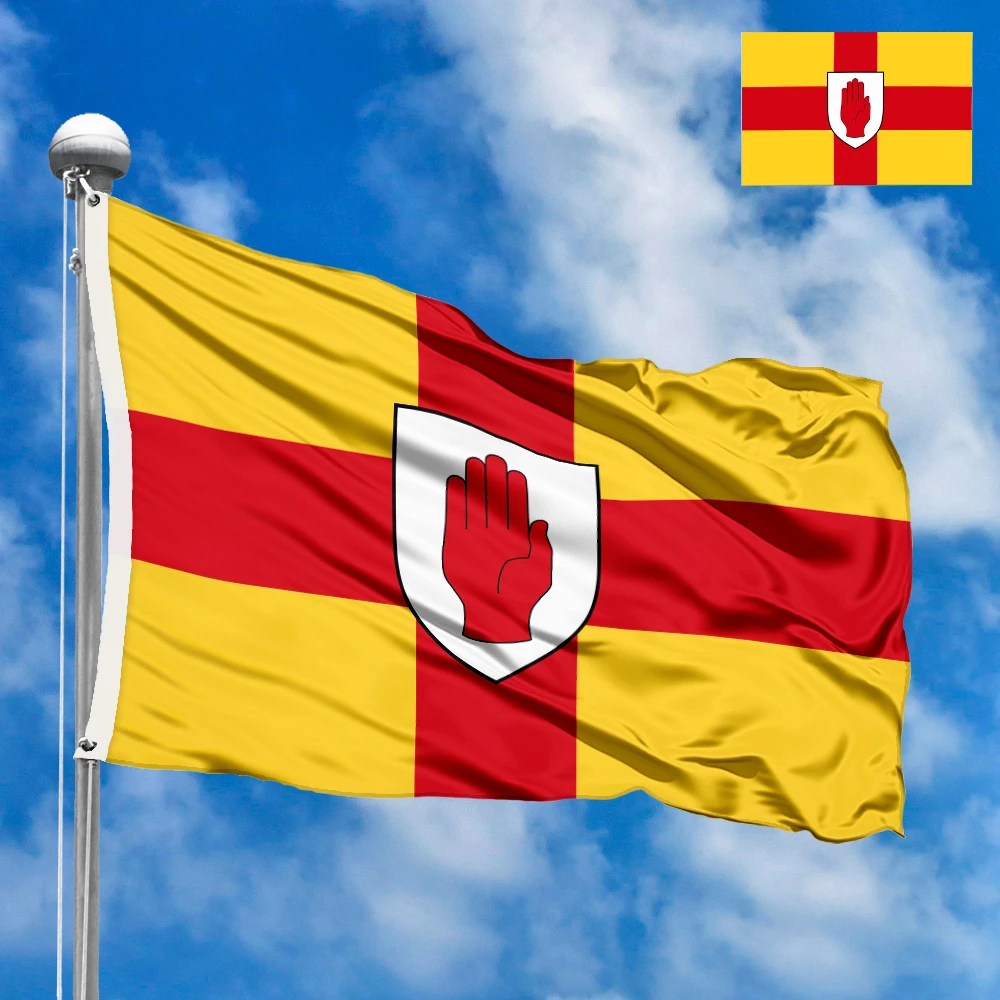
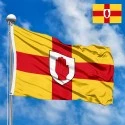

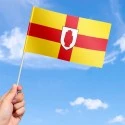

 Sizes:
Sizes:
 Sizes:
Sizes:
